Here is another image post for you all to enjoy, today’s topic is the Art of Pompeii!
Most people have heard of the city of Pompeii and the natural disaster that preserved it so well under a deep layer of ash. This city has provided an invaluable insight to the Roman world and many claim it to be the richest archaeological site in the world, because of the amount of raw data it has given scholars.
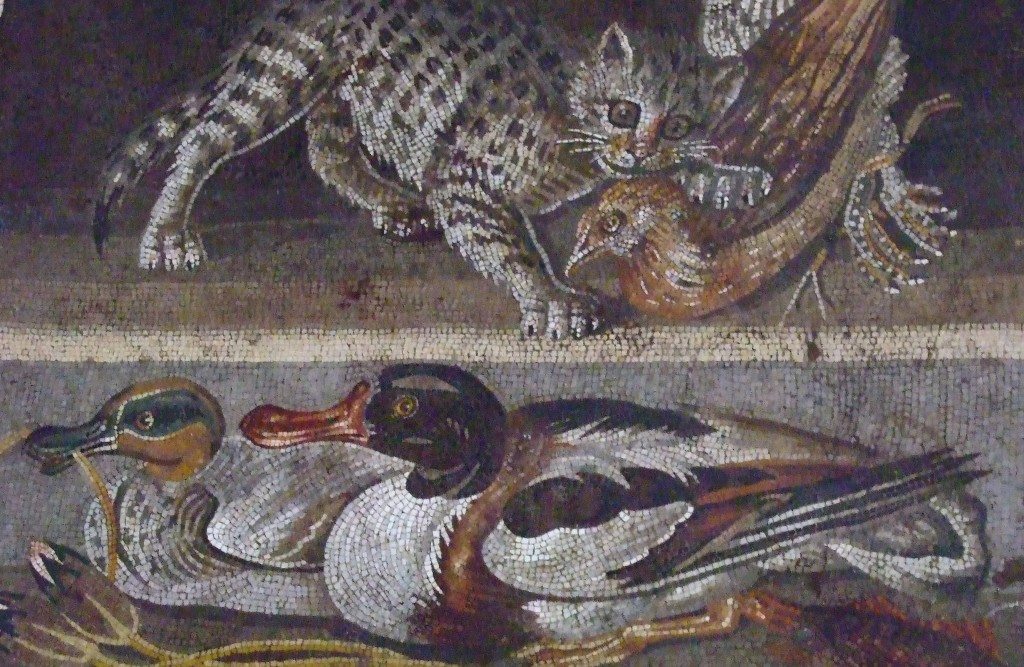
A mosaic from the Roman town of Pompeii, buried by the eruption of Mt. Vesuvius in 79 CE. Such fine mosaics were a common feature of floors in the villas of the town and depicted scenes from mythology, the owner’s business interests or, as here, animal scenes. (Archaeological Museum of Naples, Italy). Photo © Mary Harrsch (Photographed at the Museo Archaeologico Nazionale di Napoli).
We know from excavations that the town of Pompeii presents an astonishing mix of architecture such as shops, large villas to modest housing, temples, taverns (cauponae), an exercise ground and baths. Archaeologists have also found an arena, public latrines, a market hall (macellum), schools, water towers, a flower nursery, fulleries, a basilica and of course brothels and theatres.
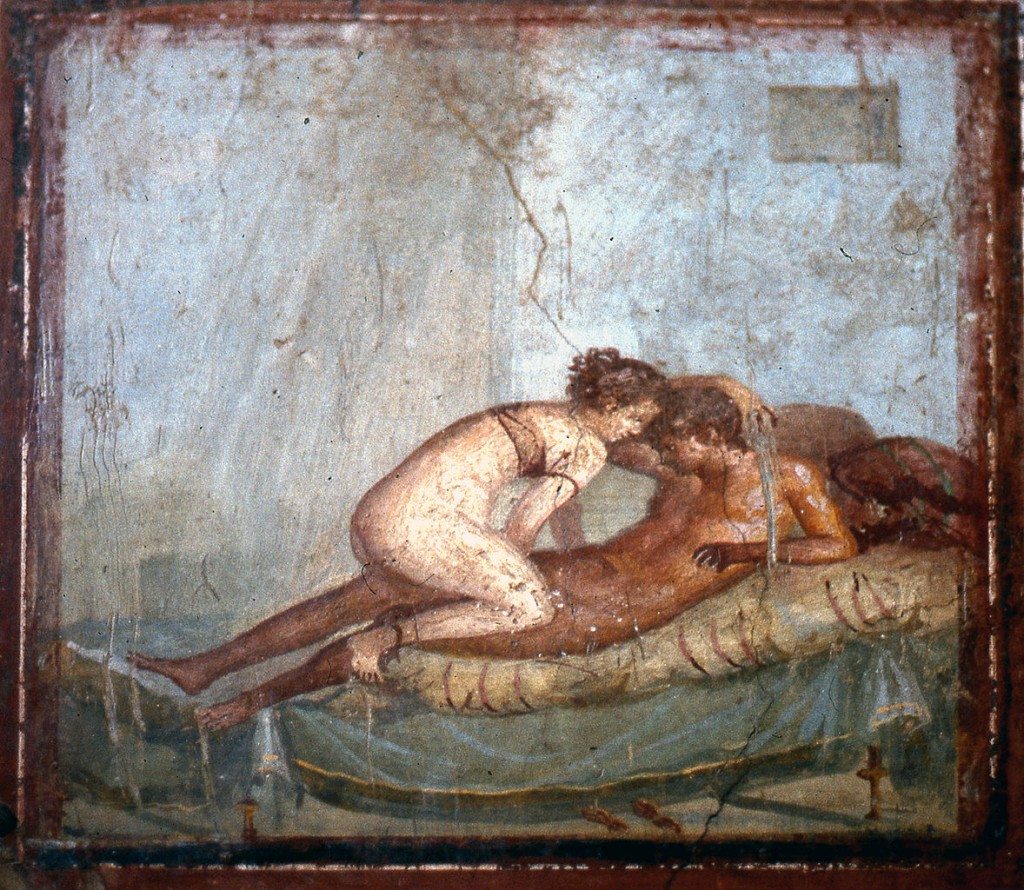
This Roman fresco shows the act of making love. It was found in the bedroom (cubiculum) of the Casa del Centenario (IX 8,3) in Pompeii. 1st Century CE. Photo © Heinrich Stürzl.
Many buildings had decorated walls in Pompeii; they were covered with frescoes or mosaics. What is interesting about frescoes (mural paintings) is that they are painted onto freshly-laid or wet lime plaster: ‘fresco’ means ‘fresh’. This way, the paint mixes with the plaster and becomes much more durable. Mosaics, on the other hand, were created using tiny pieces of colored glass, stone, or other materials. They were artfully arranged to create an elaborate picture. Frescos and mosaics depicted anything from Roman myths, religion, sports, war campaigns or sex.
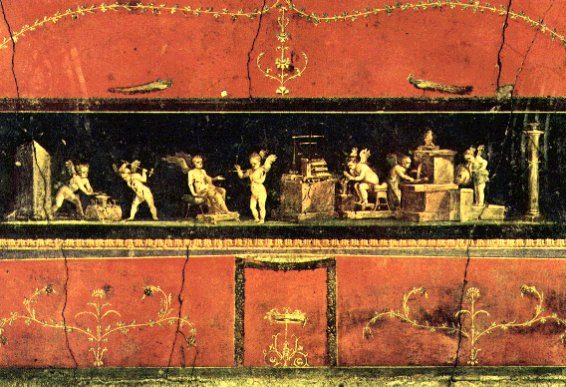
A section of the 1st century CE cupids frieze from the triclinium or dining room from the House of the Vetti in Pompeii.. The frieze depicts cupids selling flowers and perfumes and as workers who sell flowers, make wine and work gold. Photo © M.Violanti.
Some very famous buildings in Pompeii contain examples of these art forms, such as the peristyle of the House of the Vettii and the Villa of Mysteries (Villa dei Misteri). The House of the Vettii was owned by two freedmen and it is famous because within, almost all of its wall frescoes have been preserved. The Villa of Mysteries is famous because of one room which depicts a woman being initiated into the special cult of Dionysus.
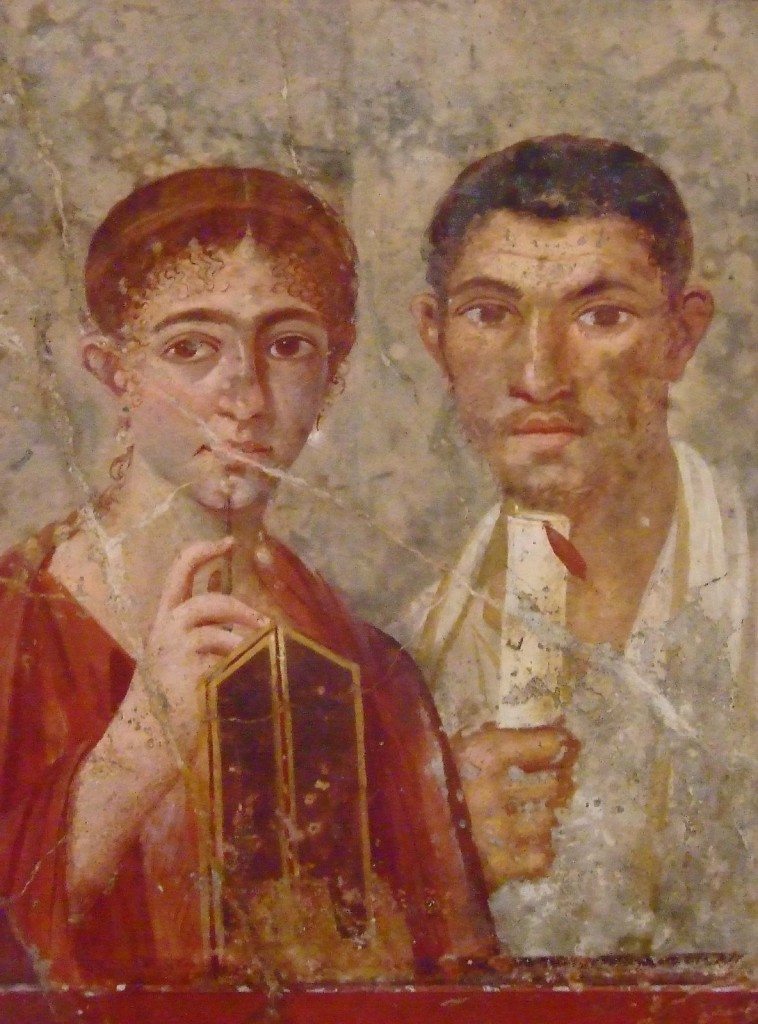
A Fresco (c. 60 CE) from the Roman town of Pompeii depicting Terentius Neo holding a scroll and his wife who holds a stylus and writing tablet. From the Villa di Guilia Felice. The villas of Pompeii were richly decorated with wall paintings depicting all manner of subjects such as mythology, erotica, architecture, trompe-l’oeil, religious practices, sports and family portraits. (Archaeological Museum of Naples). Photo © Mary Harrsch (Photographed at the Museo Archaeologico Nazionale di Napoli).
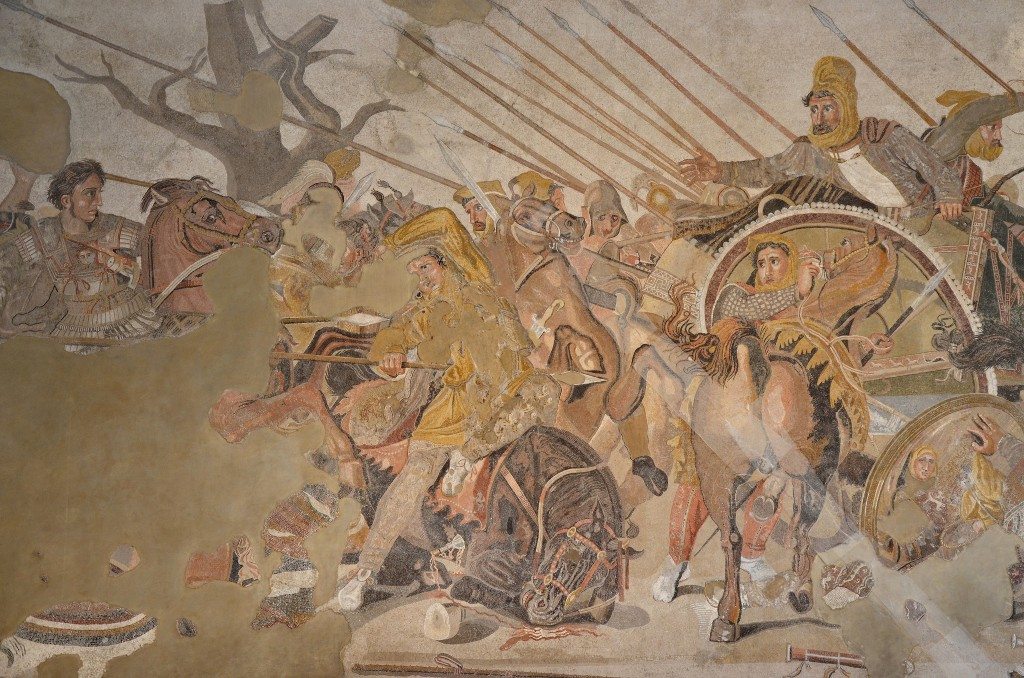
The Alexander Mosaic, dating from circa 100 BCE, depicts the Battle of Issus, (333 BCE) between Alexander the Great and Darius III of Persia. The mosaic adorned one of the exedras on the north side of the peristyle of the House of the Faun in Pompeii. The original is preserved in the Naples National Archaeological Museum. Photo © Carole Raddato.
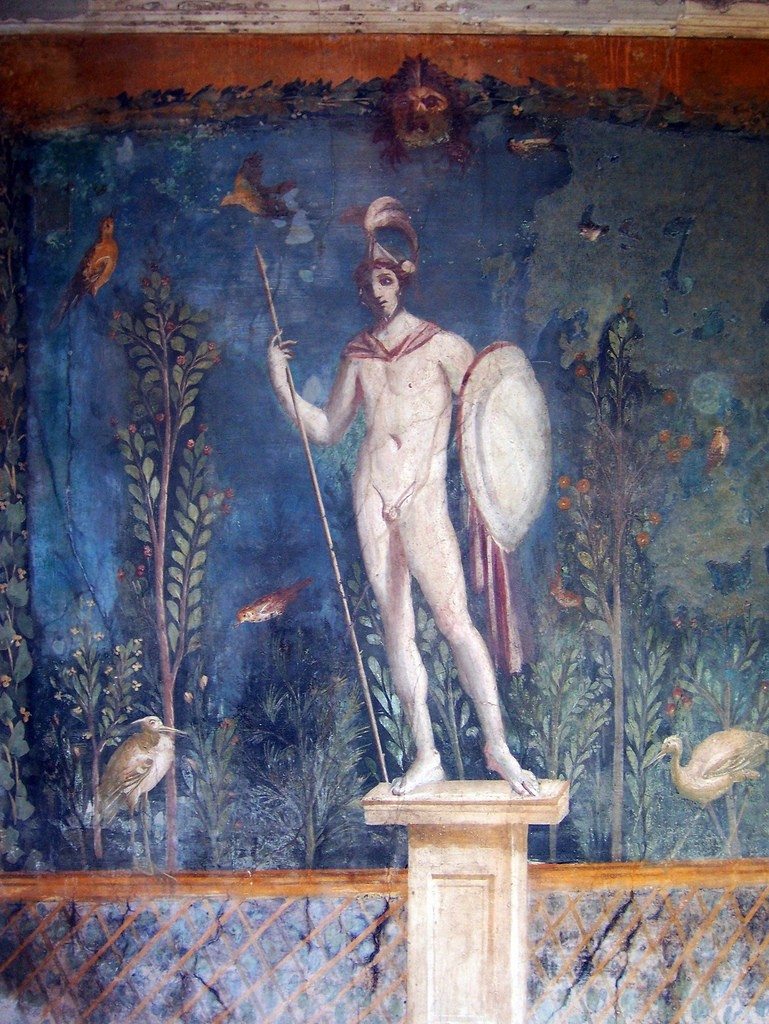
Mars, the Roman god of war, is painted standing on a plinth in this fresco from Pompeii. In a typical pose, he has a spear, shield and crested helmet. (House of Venus, Pompeii). Photo © Carole Raddato.
[embedyt] http://www.youtube.com/watch?v=SEzDiejb1a0[/embedyt]
